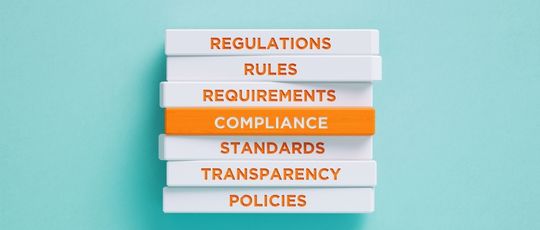For WorldatWork Members
- Total Rewards Inventory of Programs & Practices, research
- Health Insurance Selection Checklist for Employees, Workspan Daily Plus+ article
- Pay Today, Save Tomorrow? The Potential ROI for Covering GLP-1s, Workspan Daily Plus+ article
- Benefits Pulse: A Guide to Listening, Learning, and Leveling Up, tool
For Everyone
- A Prescription for Rising Drug Costs, Workspan Daily article
- Mercer: Health Benefit Cost Jump Will Hit 15-Year High in 2026, Workspan Daily article
- What Does the Data Show on GLP-1 Prescribe Rates, Coverage, Costs? Workspan Daily article
- Healthcare Cost Projections Necessitate TR Strategy Updates, Workspan Daily article
- Customizing Health Benefits: Cutting Costs Without Cutting Corners, webinar
When it comes to their pharmacy benefits, workers want the convenience and performance of the apps they use to shop, bank and unwind — and they’re looking to their employers to provide it. That was one of the big takeaways in a recent survey of 3,000 working-age Americans by Evernorth Health Services.
“Employees want more than just convenience,” said Ashley Holzworth-Nash, PharmD, the vice president of retail network product strategy and solutions at Express Scripts, Evernorth’s pharmacy benefit manager. “In healthcare, the best experiences aren’t just easier — they anticipate what people need and empower them to take confident action.”
Access bonus Workspan Daily Plus+ articles on this subject:
- Modernizing Pharmacy Benefits: A Total Rewards Opportunity
- Use This Checklist Toward Modernizing Your Pharmacy Benefits
Components of ‘App-Like Simplicity’
The table below illustrates what workers are looking for in their pharmacy benefits, according to Evernorth’s research. Repeated requests included up-to-the-minute notifications, seamless integration across benefits and platforms, and price-comparison tools for different pharmacies.
|
What Workers Want |
Percentage Who Want It |
|
A centralized digital tool to track prescriptions, dosages and refill dates |
80% |
|
Real-time updates on the status of prior authorization requests Note: Only 41% of survey respondents said they had been informed by their doctor of prior authorization requirements, and 23% didn’t find out until they tried to fill their prescription at the pharmacy. |
80% |
|
The ability to know their exact out-of-pocket prescription costs — before they pick up their medications Note: 54% had run into unexpected medication costs, and 26% went without a prescription they needed in the past year because it was too expensive. |
78% |
|
Automatic refill reminders |
77% |
|
Clearer explanations of their pharmacy benefits and cost structure |
71% |
Challenges Slowing Momentum
While some pharmacy chains and pharmacy benefit managers (PBMs) offer apps, the lack of ubiquitous solutions partially stems from the technological complexity they require, said Cody Midlam, PharmD, a pharmacy community director at consulting firm WTW. Offering instant, up-to-date medication pricing from different pharmacies, and reconciling it with an employee’s insurance details (their copayment or coinsurance and how much they’ve paid toward their deductible), requires the digital integration of multiple insurers and pharmacies, all with different data-sharing arrangements and policies.
Holzworth-Nash pointed out that more than half of consumers told health policy research organization KFF in 2023 they had experienced a problem with their health insurance in the prior year, including prescription coverage barriers, and almost half of that group did not have their issue resolved. Consequences ranged from paying more than expected for care to being unable to receive care or experiencing a decline in health.
“Healthcare remains one of the most challenging industries to navigate, with numerous steps and decision points that can seem overwhelming for consumers,” she said. “The pharmacy benefit specifically has, historically, gotten less attention in terms of benefit design compared to other employee rewards, so members don’t understand their pharmacy benefit in the same way they do dental or medical.”
Often, today’s consumers seek out discrete, non-integrated apps or services on their own, such as drug discount cards or best-price pharmacy locators, Midlam said. PBMs are progressively exploring ways to incorporate those types of offerings into their own apps and services that they offer insurers and employers, which total rewards professionals can vet as they’re assessing vendor solutions — a timely task as health costs continue to increase.
How to Get Started
So, what exactly characterizes “app-like” pharmacy benefits? According to the experts interviewed for this article:
- They offer personalized information and on-demand support in a centralized location, 24/7 — updated in real time.
- They’re easy to use.
- They’re transparent and offer actionable communication, notifications and reminders.
- They incorporate price transparency and affordability tools to allow users to decide where and how to get their medications
- And, they are cleanly interwoven with employees’ other benefits.
“When the pharmacy benefit works best, it fades into the background,” Holzworth-Nash said. “We fill members’ prescriptions. We provide care. We create value for employers and members. When we deliver on our commitments, plan sponsors can focus on their people.”
Insurers and PBMs — who already have workers’ pharmacy benefits and claims in-house — are usually the best place to start for total rewards pros looking to bring these services to employees, Midlam said.
“There are vertical integrations where insurance companies own PBMs and the companies might share an app,” said Julie Stich, the vice president of content at the International Foundation of Employee Benefit Plans (IFEBP). “In the case of a self-funded employer, the app pricing could be in the PBM contract, or perhaps a broker or consulting firm could assist with tools.”
Evernorth is working to meet these needs through personalized pricing and savings summaries for members, and accentuated cost and claims reports for plan sponsors, Holzworth-Nash said.
IFEBP pointed to several PBMs and companies offering these types of apps and services; along with Evernorth’s Express Scripts, others include PrimeCentral, Optum RX and CVS Caremark.
A leader in the marketplace that others may look to emulate is GoodRx, Midlam added; it offers a variety of pharmacy-related services, and partners with several other platforms and solutions.
Consolidating Solutions for Workers
According to Holzworth-Nash, a user-friendly pharmacy benefit app or platform can significantly contribute to employee satisfaction, productivity and loyalty.
Without integrated pharmacy benefit solutions from their employer, workers look for services, guidance and cost savings elsewhere. This often removes their claim from the PBM’s oversight, hindering the PBM’s ability to apply accumulators or monitor and notify users of drug interactions.
“You want to meet that consumer-driven market demand so that, ideally, members don’t feel the need to go searching for those things on their own,” Midlam said.
Checking all those boxes under one employer-held umbrella can improve the employee experience, he said.
“If an employee finds a price that’s lower if they were to pay out-of-pocket than it would be if they went through their insurance, that can decrease the perceived value of their employee-sponsored benefit,” Midlam said. “Taking those capabilities in-house can help a PBM or insurer rectify that. Some of that is business practice, but a lot of it is solving it with these digital solutions.”
Editor’s Note: Additional Content
For more information and resources related to this article, see the pages below, which offer quick access to all WorldatWork content on these topics:
#1 Total Rewards & Comp Newsletter
Subscribe to Workspan Weekly and always get the latest news on compensation and Total Rewards delivered directly to you. Never miss another update on the newest regulations, court decisions, state laws and trends in the field.








